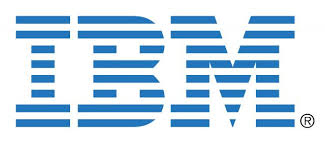How AI and the Latest Technologies Can Accelerate Progress on Sustainability Goals
By Jamie Thomas, general manager, IBM strategy and development

Originally published by AI for Good
It’s common knowledge that recycling, reducing waste and buying sustainably sourced products are all ways to promote sustainability. But it’s less well-known that some of today’s latest technologies are being used for the same purpose, at scale.
According to a 2022 UN report, progress in energy efficiency needs to speed up to achieve global climate goals. Not only is energy consumption a contributor to climate change if not procured from a renewable source, it’s also becoming increasingly expensive to source and consume energy. Technology companies, which have a hand in designing the infrastructure that powers our global economy, can help.
Hybrid cloud and AI technology can help organizations improve energy efficiency
Energy efficiency across industries contributes to Sustainable Development Goal 12, which is a UN goal to ensure sustainable consumption and production patterns. Many companies know the time to act is now to implement sustainable practices, but progress is hindered by a lack of expertise or not knowing where to start. Their challenge is to make it a true business driver while delivering ROI.
One example of the energy consumption that can account for a large portion of an organization’s use includes data centers and IT infrastructure. With businesses increasingly running more modern applications which can draw more power, reducing energy consumption across the data center becomes even more important with emerging technologies like AI.
At IBM, we believe that hybrid cloud and AI technologies are critical enablers to meet ESG targets both internally and externally. To help clients align sustainability goals to business objectives, while complying with increasing regulatory demands, IBM offers a comprehensive portfolio of consulting and technology capabilities, including IBM LinuxONE.
Watch the webinar, Harnessing AI to manage climate risk, to learn more about IBM Environmental Intelligence Suite (EIS), a modernized foundation toolkit that leverages advances in AI and data sciences to help organizations manage risk of the climate crisis.
Reducing IT infrastructure energy consumption
IBM LinuxONE can help optimize the data center for energy efficiency. LinuxONE is an IT infrastructure platform that is designed to scale up and scale out, enabling clients to run hundreds of workloads on a single system, reducing the physical space needed in the data center. For example, consolidating Linux workloads on five IBM LinuxONE Emperor 4 systems instead of running them on compared x86 servers under similar conditions can reduce energy consumption by 75%, space by 50%, and the CO2e footprint by over 850 metric tons annually.[1]
Further enhancing its energy-saving capabilities, LinuxONE includes the IBM Telum processor, an integrated on-chip AI accelerator that that is designed to offer clients the ability to run AI inferencing at scale. This allows for more efficiency, enabling businesses to leverage AI applications while still supporting their sustainability goals.
In support of IBM LinuxONE, IBM Instana Observability provides observability dashboards of key metrics including environmental data and power consumption data to understand power consumption, temperature, humidity, and heat loads of LinuxONE hardware. Instana software brings the power of data to help clients as they work to meet sustainability targets. Take a look at this AI for Good webcast for more insight into these solutions.
Meeting one of the biggest challenges of our lifetime requires utilizing the latest technologies at scale, some of which I’ve described. Whether it’s those or others, it takes a village to make it work. Together, let’s turn sustainability ambition into action. Learn more about the innovative technology and consulting solutions designed to help clients reach their sustainability goals with IBM here.
For more insights, watch the replay of the AI for Good Webinar: Creating sustainable business growth with a smaller footprint.
[1] Compared 5 IBM Machine Type 3931 Max 125 model consists of three CPC drawers containing 125 configurable cores (CPs, zIIPs, or IFLs) and two I/O drawers to support both network and external storage versus 192 x86 systems with a total of 10364 cores. IBM Machine Type 3931 power consumption was based on inputs to the IBM Machine Type 3931 IBM Power Estimation Tool for a memo configuration. x86 power consumption was based on March 2022 IDC QPI power values for 7 Cascade Lake and 5 Ice Lake server models, with 32 to 112 cores per server. All compared x86 servers were 2 or 4 socket servers. IBM Z and x86 are running 24x7x365 with production and non-production workloads. Savings assumes a Power Usage Effectiveness (PUE) ratio of 1.57 to calculate additional power for data center cooling. PUE is based on Uptime Institute 2021 Global Data Center Survey. CO2e and other equivalencies that are based on the EPA GHG calculator use U.S. National weighted averages. Results may vary based on client-specific usage and location.

